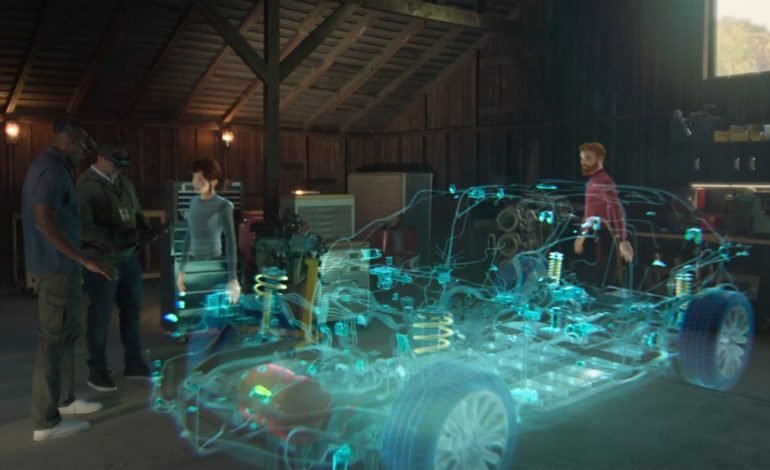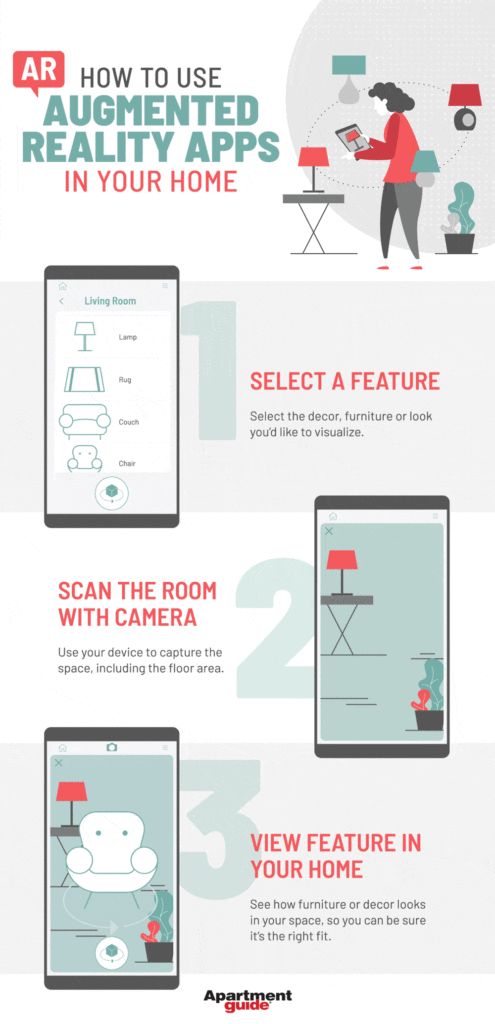Augmented reality is a technology that has gained immense popularity in recent years. It allows users to superimpose digital elements onto the real world, creating an interactive and immersive experience. Mesh, which is also known as a 3D mesh, is an essential component in the creation of augmented reality experiences. It is a network of interconnected vertices, edges, and faces that form a virtual object in 3D space.
Mesh plays a crucial role in the development of augmented reality applications. It helps to define the shape and structure of virtual objects, allowing them to be placed and manipulated in the real world. Additionally, mesh enables developers to create realistic textures and lighting effects on virtual objects, making them blend seamlessly into the real world. In this article, we will explore the many ways mesh is used in augmented reality and how it helps to enhance the user experience. So, let’s dive in and discover the fascinating world of mesh in augmented reality!

What is Mesh in Augmented Reality?
Augmented Reality (AR) is a technology that combines digital content with physical environment. The use of Mesh in Augmented Reality (AR) is important for providing users with realistic and immersive experiences. Mesh is a 3D model that is made up of a collection of points, lines, and faces that can be used to represent the physical environment. It is used to create a realistic AR experience and provide users with more realistic visuals.
Mesh can be used in AR to create immersive experiences like immersive maps, 3D models, 3D games, virtual tours, and more. The use of Mesh in AR can also be used to create interactive experiences, such as interactive videos, interactive experiences in museums or galleries, and interactive experiences in retail stores.
How Does Mesh Work in Augmented Reality?
Mesh works in AR by providing a 3D model of the environment and allowing users to interact with the physical environment. This is done by using sensors, cameras, and other devices to capture data about the physical environment. This data is then used to create a 3D model of the environment which can be used by the user to interact with and explore the physical environment.
Mesh also allows users to interact with the digital content in the physical environment. AR applications such as games, virtual tours, and interactive experiences can be created by combining the 3D model with digital content. This allows users to explore the physical environment and interact with the digital content in a more realistic and immersive way.
What are the Benefits of Using Mesh in Augmented Reality?
The use of Mesh in AR provides users with more realistic and immersive experiences. This allows users to explore the physical environment and interact with digital content in a more realistic manner. Mesh also provides users with more accurate and detailed visuals which can help to create more engaging and immersive experiences.
The use of Mesh in AR also allows for more interactive experiences. AR applications such as interactive videos, interactive experiences in museums or galleries, and interactive experiences in retail stores can be created by combining the 3D model with digital content. This allows users to explore the physical environment and interact with the digital content in a more interactive and engaging way.
What are the Challenges of Using Mesh in Augmented Reality?
There are several challenges associated with using Mesh in AR. The first is the cost and complexity associated with creating the 3D model. Creating a high-quality 3D model can be expensive and time-consuming. Additionally, creating a 3D model that is accurate and detailed enough to provide users with a realistic and immersive experience can be a challenge.
Another challenge associated with using Mesh in AR is the need for powerful hardware and software. The hardware and software used to create and render 3D models must be powerful enough to provide users with a realistic and immersive experience. Additionally, the hardware and software must be able to keep up with the user’s movements in order to provide accurate visuals.
Finally, the use of Mesh in AR can be limited by the environment. Mesh can only be used in environments that are suitable for capturing the data needed to create a 3D model. Additionally, there may be limitations on the types of objects that can be represented in the 3D model.
Frequently Asked Questions
Mesh is a technology used in augmented reality (AR) that allows users to interact with digital content in a 3D space. Mesh allows users to move around virtual objects, such as furniture, as if they were in a physical space.
What does mesh do in augmented reality?
Mesh technology in augmented reality enables users to interact with digital content in 3D space. It allows users to move around virtual objects, such as furniture, as if they were in a physical space. This technology can be used to enhance the experience of using AR applications in various ways, such as creating a more immersive environment or allowing users to manipulate objects in a 3D space.
Mesh technology can also be used to create detailed 3D models of physical environments. This gives users the ability to view and interact with a 3D representation of a real-world environment, such as a room or building. For example, it can be used to create detailed virtual tours of a location. This can be used to provide users with a more immersive experience when using AR applications.
How does mesh help in augmented reality?
Mesh technology in augmented reality helps to create a more immersive user experience. By allowing users to move around virtual objects in a 3D space, it provides a more realistic and engaging experience than if the user were to simply view a 2D representation of the object. This technology also allows users to interact with digital content in a more detailed way, as they are able to manipulate objects in a 3D space.
In addition, mesh technology can be used to create detailed 3D models of physical environments. This can be used to provide users with a more immersive experience when using AR applications. For example, a virtual tour of a location can be created with mesh technology, allowing users to explore and interact with a 3D representation of the real-world environment.
What are the benefits of using mesh in augmented reality?
The main benefit of using mesh technology in augmented reality is that it allows users to interact with digital content in a 3D space. This creates a more immersive user experience, as users can move around virtual objects as if they were in a physical space. In addition, mesh technology can be used to create detailed 3D models of physical environments, providing users with a more realistic experience when using AR applications.
Mesh technology also allows users to interact with digital content in a more detailed way, as they are able to manipulate objects in a 3D space. This technology can also be used to create virtual tours of a location, allowing users to explore and interact with a 3D representation of the real-world environment. All of these benefits make mesh technology an invaluable tool in the development of AR applications.
What are the limitations of using mesh in augmented reality?
One of the main limitations of using mesh technology in augmented reality is that it requires a powerful computer to render the 3D environment. Additionally, it can be difficult to create detailed 3D models of physical environments, which can lead to a less immersive experience for users. Furthermore, creating 3D models can be a time-consuming process, as it requires a lot of work to create detailed models.
In addition, mesh technology is limited in that it can only be used to create virtual environments and cannot be used to create interactive objects. This limitation can make it difficult to create AR applications that involve interaction with physical objects. Finally, mesh technology can be expensive to implement, as it requires powerful computers and specialized software.
In conclusion, mesh plays a crucial role in creating immersive augmented reality experiences. By accurately tracking the position and movement of objects in the real world, mesh technology allows virtual objects to blend seamlessly with the environment, giving users a sense of presence and interaction with their surroundings. Mesh also enables real-time collaboration between multiple users in the same physical space, opening up new possibilities for education, training, and entertainment.
As the field of augmented reality continues to evolve and grow, the importance of mesh technology will only become more pronounced. With its ability to bridge the gap between the real and virtual worlds, mesh is unlocking new opportunities for businesses, developers, and consumers alike. Whether it’s enhancing the way we work, learn, or play, mesh is undoubtedly a key component in the future of augmented reality.


